Day 2 :
- Track 2: Advances in Cosmetic Procedures
Location: DoubleTree by Hilton Philadelphia Airport

Chair
Angelo Rebelo
Clinica Milenio, Portugal

Co-Chair
Marcio Moreira
Federal University of Sao Paulo (UNIFESP), Brazil
Session Introduction
Arianna Di Stadio
National Security Agency of Medicines and Health Products, France
Title: New philosophy approach at cosmetic procedure
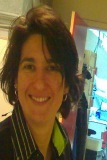
Biography:
Dr. Arianna Di Stadio completed her surgery practice in France. She is specialized in Facial Plastic and Reconstructive Surgery, ENT, and Microsurgery. She is a clinical researcher, after she completed her PhD in Audiology and new technology in deafness from Rome University in the year 2007. She has conducted different research protocols in the field of Head & neck Oncology and Neuroscience. She is a member of ANSM (National Security Agency of Medicines and Health Products), France. She collaborates with different Italian University to development research protocols addressed in different topics.
Abstract:
During my experience I understood the importance of patient global care, tipically patient in cosmetic antiage procedure wants only a one shoot procedure, like biorivitalization or filler injection. I propose to my patients a global care. In my presentation I will explain which aspect I consider, the rules to respect to obtain great result in aesthetic medical procedure. I have introduced this concept in France and in Italy to estabilish the importance of medicine also in the cosmetic approach
Hilton Becker
Hilton Becker M.D-Clinic of Plastic Surgery, USA
Title: Correcting animation deformity of the breast
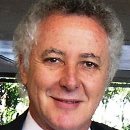
Biography:
Dr. Becker has been in plastic surgery practice since 1981 and is certified by the American Board of Plastic Surgery. He received his medical degree from the University of Witwatersand, Johannesburg, South Africa, and completed his plastic surgery residency at the Medical College of Virginia. He specializes in reconstructive and cosmetic surgery of the breasts, facial rejuvenation, and liposuction. He has developed several medical patents, including the Becker Adjustable Breast Implant and the Becker Dissector Liposuction Cannula and a complete line of natural skin care products, always keeping the patient’s best interest in mind. He is the recipient of many awards, most notably named one of Good Housekeeping’s top Breast Cancer Reconstructive Surgeons in 1989. He remains dedicated to his cancer patients around the world. His philosophy is to exceed his patients’ needs and expectations and ensure they always receive the highest standard of care.
Abstract:
Anytime a breast implant is placed beneath the muscle, some degree of implant movement or even distortion can be seen. Patients who are athletic find this particularly bothersome and seek correction The technique of correction will be discussed and representative patients shown
Robert Kesmarszky
Groupe Courlancy, France
Title: Marginal mandibular nerve anatomy as a risk factor of cosmetological surgery
Time : 10:10-10:30
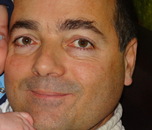
Biography:
He is currently working as a leading head and neck surgeon of the prestigious Groupe COURLANCY in France besides effecting neuromechanical research at the University of Technology and Economics in Budapest, Hungary. He is passionate about reconstructive surgery and cosmetological aspects. He is an author of several presentations and reviewer of several topic.
Abstract:
To analyse the anatomical characteristics of the marginal mandibular nerve with its impact on esthetic surgeries. Sources and methods: After the approval of the ethical committee 108 extratemporal facial nerves were dissected in the department of pathology. Intradissective observations, digital documentation, macroscopic and stereomicroscopic results of the removed specimens were analysed. Results: The characteristics of the examined nerves present an important difference of their course, diameter, branching patterns, collateral structures and vascularisation. Their rapport with other anatomical structures is not constant. Differences may occur regardless of the examined side, sex or age. Even when constant dissective conditions, unpredictible difficulties may occur. Conclusion: The anatomy of the marginal mandibular branch is inconstant. To avoid its damage, profound knowledge of the anatomy and meticulous surgery are musts.

Biography:
Mucio Joao Porto is a Plastic Surgeon from Brazil, by Prof Ivo Pitanguy at Pontificial Catholic University of Rio de Janeiro and a master in Aging Studies by Catholic University of Brasilia. He is also Invited-Professor at College of Medicine, Catholic University of Brasil, and an International Lecturer. Furthermore he is the Owner of Mucio Porto Clinic of Plastic Surgery and Aesthetic Medicine in Brasilia, Brazil. He completed the course in medicine at the Federal University of Goiás, in 1985. He accomplished internship at a public hospital of Sao Paulo and residency in general surgery at the Hospital of the Armed Forces in Brasilia in 1988. Subsequently he has been approved in the course of specialization in plastic surgery by the Catholic University of Rio de Janeiro, Professor Ivo Pitanguy service from 1989 to 1992 and received title of Plastic Surgeon, ranked first among physicians of various parts of the world. He has travelled around the world to solidify his knowledge in teaching centers such as Baltimore, New Orleans, Philadelphia and Miami in the U.S. for training in facial peels, videoscopic facial surgery, hair implants and breast augmentation with adipose stem cells. He has also attended the French Institute of the hand and liposuction clinic of Professor Ives Gerard-Illous in Paris, France. In addition, he participated in visits to the Cantonal University of Geneva in Switzerland, Breast Reconstruction Institute of Genova, and University of Milan, Italy, among others. He also completed masters in studies of aging - Gerontology - Catholic University of Brasilia in 2008, where he passed with honors with a dissertation on “The nose on Aging, a study through self-portraits.” Presently he is a PhD candidate in Genomic Sciences and Biotechnology, which aims to study the role of stem cells in aging. He is a visiting professor in the Masters of Gerontology and Faculty of Medicine and a member of several medical societies such as the Brazilian Society of Plastic Surgery, International Society of Aesthetic Plastic Surgery, among others. He has presented scientific papers at various medical meetings in Brazil and in several countries as well as writing book chapters nationally and internationally. He has received numerous titles and awards as an indication for the “Who’s Who in the World” and “Educators of the World 2010 “Biographical Institute of Cambridge in the UK. Prof Porto practices currently in the trendy district of South Lake in Brasilia, capital of Brazil.
Abstract:
Renewed interest in techniques using the patient’s own fat for cosmetic and reconstructive plastic surgery has been noted in recent years. The use of fat grafting dates back to 1889 when Van der Muelen described the first use in human autotransplantation, closely followed by Neuber in 1893 that used it to fill a soft depression in the face of a woman. In 1910 Lexer published the first report with regards aesthetic medicine. In these procedures, fat harvested from one part of the body is washed (paying attention not to break it), purified and after transferred to other areas; for example fat obtained from a liposuction can be used for breast augmentation, reshaping, and facial rejuvenation. Many patients are always looking out for the most natural types of treatment they can find and the thought of an invasive cosmetic procedure make often delay or postpone a procedure. Fat grafting is an alternative easy and fast procedure to produce, good results with minimal risks, and lasts a long time, and involves the use of biomaterials mainly. All these factors bring a lot of patients continue to prefer this treatment. Once injected in the specific area that need to be treat, fat offers a matricial support to angiogenesis, stimulates the proliferation of pre-adipocytes. In this way patient can have benefits in case of facial deformities or post- surgical defects as well as to recapturing a youthful appearance, eliminating wrinkles, restoring harmonious volumetric facial and body ratio and regaining the wanted contour. Patient regain self- confidence and assurance just like any other cosmetic procedures but without having scars in a natural way, like it is suppose to be. Of course, not all fat grafting is the same because different problems require different solutions. Based on this, we have methods of fat harvesting, method of cells processing, method of transplantation and method of recipient site. There are many factors to be taken into consideration such as the state of the tissue in the recipient site, possible inflammation or the resorbable fat ratio. However, it has a big potential in vast reconstructive and aesthetic procedures.
Fabio Fantozzi
Studio Fantozzi, Italy
Title: Brachial lifting using the Balanced Triple-Vector (BTV) technique with dual opposing flaps
Time : 10:50-11:10
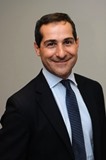
Biography:
Dr. Fabio Fantozzi received his Doctor of Medicine degree from Rome's "La Sapienza" University, one of the oldest and most esteemed universities in Europe. He also completed his residency in general surgery at this distinguished university. Dr. Fantozzi went on to complete a plastic surgery residency with Professor Ivo Pitanguy at Carlos Chagas University in Rio de Janeiro, Brazil—the oldest plastic surgery college in the world. This unique training gave Dr. Fantozzi hands-on experience that many other schools do not provide, and the opportunity to work with some of the leading surgeons in the field of cosmetic and reconstructive surgery. Dr. Fantozzi’s unwavering dedication to quality patient care and safety, and his reputation for producing exceptional results, is what has made our practice one of the leading cosmetic surgery facilities in Italy. Dr. Fabio Fantozzi is known among his patients as a doctor who is communicative, thoughtful and highly skilled. He will go above and beyond the call of duty to ensure that his patients are well cared for and satisfied with their results. He takes the time to listen to each patient to gain a better understanding of their desires and expectations. Patients from all over the world come to Dr. Fantozzi to benefit from his unique training and medical expertise.
Abstract:
Brachioplasty often involves removing excess skin. Many traditional approaches to this form of surgery are prone to complications and imperfect healing of the incisions. Traditional techniques usually take little or no account of the force vectors that are subsequently applied to the incision after the operation. This contributes towards scarring and other complications. Method The proposed technique involves the explicit application of three balanced force vectors that greatly reduce scar-related complications. Although the scar is longer, it is on the medial side of the arm and usually fades away completely over time, with greatly improved aesthetic results. A closely related aspect of this technique is the application of anthropometric techniques in order to plan the operation for best results. Result The proposed technique has been applied in practice to 23 patients. There were no long-term complications. Temporary paresthesia was observed in 5 patients and temporary swelling of hands in 2 patients. One case of seroma was also detected. Two patient required surgical scar revision. One patient was unsastified with the final scar quality. Conclusions Due to the superficial resection in this technique, no damage to the subcutaneous tissue and lymphatic network occurs, resulting in a more predictable outcome with greatly reduced risk of complications. This technique is particularly good at reducing the scar retraction issues most common when using other single-vector approaches. Level of Evidence: Level IV, therapeutic study.
Alain Tenenbaum
Swiss Academy of Cosmetic Dermatology and Aesthetic Medicine, Switzerland
Title: Workshop on “Butts reshaping by chemical myoplasty and myopexyâ€
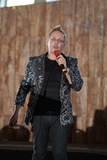
Biography:
Alain Tenenbaum, is the President of Swiss Academy of Cosmetic Dermatology and Aesthetic Medicine (SACDAM) and President of International Peeling Society(ISPC). He is a specialist in ENT (Oto Rhino Laryngology) and Facial, Plastic, Reconstructive and Cosmetic Surgery. Also, he is an inventor of Endopeel and many other peelings like Peeling de Luxe. He is a Silver medalist faculty of University of Paris, France and an International expert of Complications of Fillers and Endoprosthesis. He is known as a worldwide trainer of Aesthetic Medicine and Cosmetic Dermatology. He is an expert in SEO- Search Engines Optimization, for Aesthetic Medicine, Anti-Aging Medicine, Cosmetic Dermatology and Aesthetic Plastic Surgery. He is an active member of European Society for Cosmetic and Aesthetic Dermatology (ESCAD), European Academy of Facial Plastic Surgery (EAFPS), and FMH.
Abstract:
The immediate chemical and medical Gluteopexy is a new weapon for dermatologists, by using the techniques called Endopeel, which have like mechanism of action a myotension, a myoplasty and a myopexy which duration does not exceed 6 months. These techniques can be proposed to patients who wish to get a gluteopexy, to patients who are not candidates for a surgical Gluteoplasty, to patients which refuse suspension threads, to surgeons who want to complete their operation of Gluteoplasty with gluteopexy. The advantages of these techniques are important for the patients, as the immediate effect, the absence of scar, the absence of down time, the absence of social eviction, as the transitory complications which are limited only to short duration edema and ecchymosis.
Patients’ selection
- All patients who desire a surgical or non-surgical gluteopexy can be candidates, as those not being candidate for any kind of filler(the fillers are too often sources of complications like granulomas, necrosis, migration, nodules etc.), and those wanting to complete or to maintain the benefits of suspension threads .Best indication is not fatty gluteal area, sagging down.
- Our critter of exclusion: Alcoholic patients, smokers, pregnant women, subjects under 18 years, patients affected with a cardiopathy, nephropathy and liver problems.
Benefit and Advantages:
- The gluteopexy effect is immediate and is perfectly visible 30 minutes after the end of the treatment with a maximum result 2 to 3 days after the procedure.
- The gluteopexy effect is early and will be relayed by the late peeling effect, specific to the techniques Endopeel.
- The treatment can be ineffective in 8% of the cases (bad technique).
- The effectiveness of this treatment increases with the number or the repetition of the procedures because the basic muscular tone will be thus increasingly high on the scale of the tension of this last
- same patient and by making a comparison between the treated side and the controlateral untreated one by pure visual inspection, or by photographic images, or by using points of reference. Results can be not only appreciated by inspection but also by palpation and eventually for very special experts by percussion
- These same parameters are taken again to evaluate the duration of the results objectively
- The procedure is made comfortable for the pusillanimous patients thanks to the special anesthetic gel applied before the Endopeel procedure and giving satisfaction of painless technique to each patient, because the protocol can be adapted perfectly according to the timetable of the patient and also according to his social requirements
- In the field of safety, so far and since 16 years these techniques started to be used, no legal procedure against a physician using the techniques Endopeel was announced and/or indexed to our knowledge. The only complications met are only transitory, like edema ecchymosis
- The report/ratio benefit cost of the treatment is accepted in the large majority of the cases
Techniques
- The selection of the patients has been described above.
- The material to be used is the following:
- The medical device like oily acid carbolic ( DocTNB)
- Syringes 1 ml luer lock
- Flexible needles for the body25 or 27g
- 1 needle 18g to aspire the solution of oily carbolic acid
- An anesthetic specific gel containing lidocaine 23%, tetracaine 7%, using an emollient lipophilic lubricating gel like vector
- A post, Endopeel, cold cream
- Finally one not alcoholic disinfecting product, gloves and gauzes.
- The technique known as standard treats: the whole gluteal area on all sides, the banana fold, eventually the areas under the banana fold as the area above the bitrochanteric line.
- Areas of, love handles, can be treated as well if there is no fat excess. In case of fat excess a prior lipoplasty should be done and Endopeel technique can follow 1 month after the lipoplasty procedure.
- The basic technique consists in injecting in subcutaneous perpendicular to the plan of the muscles 0.10 ml of oily acid carbolic each 2cm and same in the perpendicular plan to the precedent following the direction and the sense to obtain the wished lifting effect using crisscross-technique.
- Errors: The intra vascular injection of carbolic acid cannot be regarded as an error, considering the sclerosing effect of this substance. The injection into the motor plate or any nerve of carbolic acid may slow down the speed of nervous conduction for short duration.
- Safety: It is recommended for toxicity reasons not to inject more than 25 ml/ day/ patient . In case a patient needs more than 25 ml, this technique can be divided in consecutive days, respecting the maximal dose per day per patient.
Conclusion
Until now, the concept of Gluteoplasty was based only on volume augmentation concept, without taking care of the gluteopexy. With Endopeel techniques one acts not only on the myotension by preserving the muscular mass and without affecting the muscular contraction but also on the myoplasty and the myopexy .With this fact the indications of the fillers become more restricted and will apply only to the depressions which remain after tissue tension of the selected area. Indications of sutures will be too more restricted as they are not only painful but it is rare that a patient submits 2 times to sutures gluteal lift. Finally chemical gluteopexy with a handing-over in tension of tissues with tightening effect like the Endopeel techniques give a better shape of the gluteal area, project a nice convexity of the new gluteal shape , which is tighten too , with redraping of the oranges skin dued to cellulitis ( which gets the, iron effect, with Endopeel ). Also the eventual stretch marks will only optically disappear, being as well redraped through the, iron effect, of Endopeel.
The technique Endopeel is a new strategic weapon for the Dermatologists and Plastic Surgeons enabling them to complete and/or maintain a Gluteoplasty which is an alternative to the surgery.
Thomas Haffner
Aesthetic Care, Germany
Title: 3D breast lift without a vertical scar
Time : 12:00-12:20
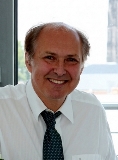
Biography:
Dr. Haffner has concluded his medicine study and his doctorate in Budapest, Hungary in 1979 and he became a specialised general surgeon in 1985. Since 2000 he opened his own outpatient private clinic for aesthetic-plastic surgery in Cologne, Germany. He has specialised in the cosmetic surgery of the face and the breast and of the intimate surgery. Dr. Haffner owns the Hungarian and German specialist's recognition of the surgery and vascular surgery. He passed the european examination cosmetic surgery and he is a board certified cosmetic surgeon of the International Board of Cosmetic Surgery in Cambridge, UK.
Abstract:
The author presents his developing works about a new method of the breast lift without a vertical scar. He has developed a newly constructed breast lift, from which result properly but also naturally tightened breasts from all three dimensions of view und thus without a vertical scar. The new Haffner breast lift means the reposition, the augmentation, the lifting and the stabilisation of the breast in the right position and right projection at the same time without a vertical scar. Ptotic breasts have however often lack of volume. By a simple enlargement with an Implant would we create from a small ptotic breast a large one without a good breast projection and without a nice cleavage. The three dimensional symmetry would be missed. For these challenging cases the role of Haffner´s 3d breast lift is to reposition and to shorten the ptotic breast, so that it will be suitable to be enlarged by an implant in a second session. The main argument for the new method is that, that the proper 3d form in all three dimensions achieved, while a vertical scar is abandoned. Therefore the new 3d breast lift means a new era in the aesthetic-plastic breast surgery. No woman in the future needs to be satisfied with disfiguring vertical scars in case of a breast lift any more. The small as well as a bit larger breasts could and should be tightened in the future without unpleasant vertical scars. The breast Lift with an inverted T- scar was exchanged by the Lift with the vertical scar; the vertical scar now can be exchanged by the lift without them.
Angelo Rebelo
Clinica Milenio, Portugal
Title: Breast augmentation tumescent local anaesthesia cohesive gel silicone implants
Time : 12:20-12:40

Biography:
Dr . Rebelo has concluded his medicine studies in the Faculty of Medicine of the University of Lisbon, Portugal in 1980 and he became a specialized in Plastic, Reconstructive and Aesthetic Surgery in 1990. Since 1997 he opened his own outpatient private clinic for aesthetic-plastic surgery in Lisbon, Portugal, in the last 18 years, he’s in exclusivity at Clinica Milénio in Lisbon - Portugal, as Clinic Director and Cosmetic Surgeon. He is precursor in several techniques of Cosmetic Surgery performed under Local Tumescent Anaesthesia and outpatient. Internationally, Dr. Rebelo has been invited to teach and perform several surgical demonstrations in many countries. Dr. Rebelo is frequently sought out by the medias as an authority in his field. His surgical techniques and advancements have been the subjects of interviews in Portuguese and international media, he’s also author of numerous videos, lectures and articles presented at congresses and scientific journals. He is also an active member of several Professional Societies and Associations through the world.
Abstract:
Breast implants is always a controversial subject. Because, there are many approaches and opinions vary. The Approach Via (areolar, infra-mammary, axillary, endoscopic…) The Anaesthesia (general, local…) The Positioning of the Implant (retro-glandular, retro-pectoral) The Type of Implant (silicone, saline, hydrogel, triglyceride…) The author prefers and usually uses the following procedure, because of fewer complications and better results. THE AREOLAR VIA - First choice (inferior circun-areolar or trans-areolar of Pitangui) because there is no risk of hypertrophic or keloid scaring and it doesn’t disturb the normal breast anatomy and physiology. The criteria, the areola must be at least 3 cm in diameter. According the implant size can be smaller. THE RETROGLANDULAR PLACEMENT – first choice and in almost all cases he prefers this placement because it gives a more natural appearance, there is no discomfort for the patient as in the retro pectoral position and no problem with dislocation of the implant. TUMESCENT LOCAL ANESTHESIA - if there are no counter-indications he prefers the tumescent local anaesthesia. He uses the modified Klein’s formula, 1,7-2 mm Klein’s cannulas and the Byron compressed system. COHESIVE GEL SILICONE PROTHESIS - The author prefers the cohesive gel silicone implants because they are very safe and of excellent quality. SURGICAL TECHNIQUE / PROCEDURE – The incision, approach at aponeurotical level, undermining to perform a pocket at least 2-3 cm bigger than the implant diameter, careful haemostasis, put the implant in place, close by layers. Jackson-Pratt drain is used routinely and removed 24-48 hours after. All patients have a complete clinical history, pre-op routine examinations plus mammography and/or mammary ecography.
Maria Vitale
Industrial Farmaceutica Cantabria-IFC Group, Spain
Title: Assessment of the efficacy and tolerance of a new combination of retinoids and depigmenting agents in the treatment of melasma
Time : 12:40-13:00
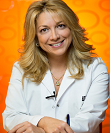
Biography:
Maria Vitale is currently working as a Medical Director for IFC Group [Industrial Farmaceutica Cantabria], at Madrid, Spain. She is an active speaker and has delivered presentations in different conferences. Her principle expertized topics are Acne, Herpes, Photoprotection, Photoaging, and Phototherapy. She is member of various scientific societies- American Academy of Dermatology (AAD), Dermatology Society of Argentina (SAD), and many more.
Abstract:
Melasma is a common hyperpigmentation disorder which mainly affects women with a high phototype and often remains active for several years, being associated with a considerable psychological impact. The management of melasma is often challenging, because it is very resistant to treatments and requires long-term therapeutic protocols. Conventional treatment includes depigmenting products, such as hydroquinone (HQ), retinoids, mequinol, azelaic acid, arbutin, kojic acid, etc., which exert their action at different stages of melanogenesis. In addition, avoidance of aggravating factors is strongly indicated. Combination therapy is usually prescribed, with a typical association of HQ and retinoic acid. However, HQ’s safety has been questioned in certain cases, and prolonged use may lead to adverse effects such as depigmentation and ochronosis, so it cannot be considered as a golden standard. In the search for safer alternatives, a new product based on RetinSphere® technology has been designed. It incorporates two topical retinoids: retinol glycospheres and hydroxypinacolone retinoate, which directly interacts with the retinoic acid receptor but does not induce irritation. Additionally, the product includes other depigmenting active ingredients. The objective has been creating a product which may reduce or even substitute the use of HQ in the management of melasma patients. We will show the results of clinical assays on several skin types and the efficacy and safety of the new combination of retinoids in the improvement of melasma will be discussed.
Soghrat Nazem, Loghman Nazem
Nazem Clinic, Iran
Title: Thread tightening and lifting: An amazing anti-aging approach
Time : 13:00-13:20

Biography:
Soghrat Nazem owns a private clinic in Iran. He is a skin and hair care product instructor. His area of interest is mesotherapy, botox injection, filler Injection, Slimming, Cavitaion, Cryolipolysis, and Thread Rejuvenation
Abstract:
Thread tightening and lifting is a novelty in aesthetic medicine used to achieve a rejuvenation effect on the face and the body. This new method is based on the implanting of multiple mini-threads in the dermis. After pulling needles out, the inserted suture stay into the skin. These threads made from Polydioxanone (PDO) which are biocompatible, synthetic, absorbable, monofilaments, non-toxic and heavy metal free material threads. PDO threads cause a minimal inflammatory reaction in tissue and stimulates tissue neocolagenesis process, create new elastin and hyaluronic acid. They will be absorbed slowly during 6 †8 months into the body safely so continuing effects are expected. Then, it is a simple, safe and effective techniques to counteract the sagging of the soft tissues of the face and the body that caused by aging and it provides anti-aging effects. The needle sizes that utilize for face are 26-30 G with bended threads of 5-0, 6-0, 7-0USP sizes. The entire procedure takes about 1 hour (depending on treatment area), where an anaesthetic cream is applied on the treatment area prior to the procedure. The results are skin rejuvenation and tightening, wrinkles smoothing, improved skin tone and structure, tightenining pores by new tissues and lifting of the skin. It means a more youthful skin. These procedures have very short down time, long lasting results, the least invasiveness, minimal risk of bleeding and minimal side effects. It could be applied anywhere on the body, including nasolabial fold, eye corners, cheeks, double chin, neck, forehead, glabellar fold and parts of body like forearm and abdomen. PDO thread tightening and lifting is for anyone who wishes to reverse aging effects by fixing these problems from the inside. It is suggested to patients whose main symptom is sagging on the face, wanting smaller youthful face, like to restore volume with natural rejuvenation techniques, wishing to look like their previous younger photos and do not wish to undergo invasive surgeries.
- Track 6: Latest Procedures and Strategies in Hair Transplantation
Location: DoubleTree by Hilton Philadelphia Airport

Chair
William Lindsey
Nova Hair Center, USA

Co-Chair
Robert Kesmarszky
Groupe Courlancy, France
Session Introduction
William Lindsey
Nova Hair Center, USA
Title: Ultra-refined Follicular Unit Transplantation into scar tissue as an alternative to surgical scar revision in hair bearing scalp
Time : 13:55-14:15

Biography:
William H. Lindsey is a graduate of the University of Richmond where he received his Bachelor of Science degree in 1986. He graduated from the University of Virginia-Medical School in 1990 and completed his residency training in Otolaryngology-Head and Neck Surgery at UVA in 1995. Following his residency, he completed a specialized fellowship in facial plastic and reconstructive surgery under the auspices of the American Academy of Facial Plastic and Reconstructive Surgery Fellowship in South Carolina. At the conclusion of his fellowship, he returned to the University of Virginia as an assistant professor in the Department of Otolaryngology for 4 years. He moved to Northern Virginia in 2000 to practice Hair Transplantation and facial plastic surgery and joined the staff at George Washington University Medical Center. He is a Fellow of the American College of Surgeons, a Fellow of the American Academy of Facial Plastic and Reconstructive Surgery, and a Fellow of the American Academy of Otolaryngology-Head and Neck Surgery. He is an associate of the American Academy of Cosmetic Surgery, a member of the International Society of Hair Restoration Surgeons. He has been practicing hair transplantation for over 18 years with hundreds of satisfied patients. By training and working with some of the biggest names in the industry he has produced his own unique protocols and methods that have gained him worldwide recognition among patients and surgeons alike. He performs high density, ultra-refined, follicular unit transplantation (FUT) via both strip method and Follicular Unit Extraction (FUE) method and performs mega sessions routinely.
Abstract:
Background:
Scars in hair bearing scalp present unique challenges. While scar revision is the main tool in the reconstructive surgeon’s armamentarium, at times it may have either contributed to the scar problem or may not be an ideal choice. Hair transplantation offers an alternative in select cases. A review of 12 repair cases is presented with discussion of specific nuances particular to graft placement into scar tissue.
Materials and Methods:
Review of 12 cases of hair transplantation to repair scars in hair bearing scalp in patients with at least 1 year follow up.
Results:
All 12 patients had good to excellent coverage of their scars with hair transplantation using follicular unit harvest by either strip or FUE. In 3 patients, particularly dense and fibrous parts of the treated scar showed less growth but still a significant growth yield. Full growth often required 15 months.
Discussion:
In this series, both strip and FUE graft harvest was utilized. In both techniques, minimal trimming of subcutaneous tissue was performed so that the follicular unit was transplanted with slightly more surrounding tissue than for a standard hairline case. Recipient slits were therefore made slightly wider, averaging 1.25mm and minimal pressure was used in graft placement.
Conclusion:
In patients with scars in hair bearing scalp, hair transplantation offers an alternative to surgical scar excision. Careful harvest and placement of slightly thicker grafts into properly created recipient slits yields consistent and cosmetically pleasing results.

Biography:
Michael B Wolfeld, M.D. is a board certified plastic surgeon and an Assistant Clinical Professor of Plastic Surgery at the Icahn School of Medicine at Mount Sinai Hospital in New York. At Bernstein Medical he performs hair transplants using the newest technologies including the ARTAS Robotic Hair Transplant system. He has nationally published and has lectured extensively on cosmetic surgery and aesthetic surgery, new advances in hair restoration and robotic hair transplant surgery He received his Bachelor of Science degree from Cornell University and earned his medical degree from SUNY Downstate Medical School. He completed the highly competitive six year training program in the specialty of plastic and reconstructive surgery at the Mount Sinai Medical Center, where he served as Chief Resident. In addition, he pursued an aesthetic fellowship at Lenox Hill Hospital and the prestigious Manhattan Eye, Ear & Throat Hospital. He has participated in international plastic surgery missions including traveling to South America to treat children with various congenital deformities. In addition to his work at Bernstein Medical, he helps to train the next generation of plastic surgeons at Lenox Hill Hospital, Manhattan Eye, Ear, & Throat Hospital, and the New York Eye & Ear Infirmary.
Abstract:
Follicular unit extraction (FUE) is a harvesting procedure where hair is removed directly from the posterior and parietal regions of the scalp (donor area) as individual, naturally occurring groups of 1-4 hairs. The groups of 1-4 hairs harvested are referred to as the “follicular unit”. FUE is an instrument dependent procedure, and therefore, the tool utilized for harvesting the grafts may significantly affect the results. The FUE technique consists of two main steps:
- Separation of follicular units from the surrounding skin, and
- extraction of the follicular units from the scalp. Step one of an FUE procedure, the separation of the follicular units from the surrounding donor tissue, is a highly repetitive and labor intensive process that requires great precision and accuracy. This step, which must be repeated manually hundreds to thousands of times in a typical FUE procedure, subjects the patient to significant human error and variability. The robotic system, ARTAS® system (Restoration Robotics, Sunnyvale, CA), was introduced in 2011 to automate the punch mechanism, which is the crucial first step of a FUE procedure. The robotic system increases the accuracy of graft harvesting, which in turn minimizes damage to hair follicles and reduces harvesting time. Each of these factors potentially contributes to increased graft survival. Additionally, a more recent advancement of the robotic system is its ability to perform automated recipient site creation. Preliminary observations suggest that it can accomplish this function with greater precision and consistency than when performed manually.
The ARTAS® Robotic system is an image-guided system composed of a robotic arm, dual-needle punch mechanism, video imaging system, and a user interface. Its extraction technique consists of a double-punch arrangement with an inner (sharp) punch and outer (dull) punch. The inner punch has cutting capabilities to score the upper most part of the skin and the outer punch has a blunt edge used for dissection of the follicular units from the surrounding tissue that minimizes injury to the grafts. The image-guided system allows this step to be accomplished with great precision. The patient lies on a specially designed operating table that allows access of the robotic arm to the donor area of the scalp. The robotic arm is monitored and controlled from a computer system and there is a wall mounted control that is visible to the physician and staff.
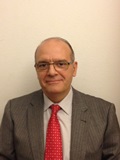
Biography:
Nicolas Perez-Mora completed his MD PhD Degree in Madrid – SPAIN. He was trained on Clinical Research in Baylor University Medical Center, Dallas (U.S.A.) 1989-1990, and in Northwestern Memorial Hospital, Chicago, U.S.A. (1999-2000). He is author of 40 registered PubMed publications. He works as Medical & Scientific Advisor for the Svenson Medical Corporation www.svenson.es who owns over 60 hair-care centers in Spain, Germany, Portugal and Switzerland. Currently he combines hair-care clinical practice with hair-care clinical research. He was recently awarded for the Best Clinical Poster presented in the 8th World Congress for Hair Research (Jeju Island, Korea, May 2014)
Abstract:
Acute telogen effluvium (ATE) is often associated with Female Androgenetic Alopecia (FAA) but predictive factors of ATE - FAA association, and clinical factors or therapies which may influence the progression of ATE to Chronic Telogen Effluvium (CTE) have not been reported yet. We have retrospectively analyzed 503 ATE patients with a minimum 1-year follow-up. Demographic and clinical variables considered were: age, year when ATE diagnosis was made, region where patient was located, different oral treatment modalities, and Minoxidil topical therapy. Triggering causes were classified as follows: (1) Seasonal hair loss, (2) Severe Diet, (3) Postpartum, (4) Iron deficiency, (5) Psychoemotional stress, (6) Thyroid dysfunction, (7) Medication intake or withdrawal, (8) Antineoplastic therapies and/or major surgery, (9) More than one of the above mentioned. Chronic telogen effluvium (CTE) diagnosis was established when ATE lasted longer than 1 year. FAA diagnosis was always established by the patient’s physician. Univariate analysis and a binary logistic regression model were used to identify independent predictive factors of ATE – FAA association and CTE progression. Then, we have identified predictive factors of ATE – FAA association. Conclusions: Triggering Cause is an independent predictive factor of ATE-FFA Association. Triggering causes with higher risk of concurrent FAA are: severe diet, iron deficiency and thyroid dysfunction. Patients suffering ATE may benefit from different therapeutic approaches (depending on which is the triggering cause) to prevent or treat their association with FAA. Minoxidil use shows a trend to lower the percentage of progression to CTE.
Hannelore Leavy, Bojana Matovski
HR Leavy LLC Spa & Wellness Consultancy, USA Rejuveeâ„¢, USA
Title: Workshop on “New generation RF technology-(Treatments & benefits for patients & your bottom line)â€

Biography:
Bojana Matovski - The “Beauty Doctor” holds a Doctor of Medicine from the University of Belgrade, the capital of former Yugoslavia. She has studied with such leading providers as plastic surgeon, Dr. Jadran Dondic , Dr Nenad Stepic ; Dr. Zoran Stojcic , a Maxillofacial Surgeon a specialist, who has used PLUTON Electronic at the Mayo Clinic; Jacksonville University Hospital, and Dr. Zarko Borovic After completing this extensive her training, she is internationally certified to educate/train others in the use of all Pluton Electronics devices which are used in hospitals specializing in aesthetic plastic surgery. Her motto is “rejuvenate the skin – hold up aging!” Because of her outstanding achievements Worldwide, Who’s Who in American Education 2012-13, recognized her, as Owner, Trainer, and Educator of executives, professionals and entrepreneurs, and in May 2012, the National Association of Professional Women named her Woman of the Year 2012/2013.
Hannelore R. Leavy is Founder and Director of the Day & Medical Spa Association, a professional association which is dedicated to the education of customers, to benefit and to make availability of Spa Treatments; for professionals to elevate and preserve the standard of Spa services. As Marketing Director of Austrian National Tourist Office, she promoted health vacations to European Spa’s. She is the associate publisher of “The Spa Finder” She has appeared on CNN Financial News, MSNBC, and has been quoted hundreds of times in all major newspapers and magazines in the US and international
Abstract:
3rd Generation Radio Frequency technology is the world’s most advanced Radio Frequency technology. It is clinically proven and is used successfully by physicians, aestheticians and in clinics around the world, it regenerates collagen, tightens and tones the skin, improves the appearance of cellulite and reduces body circumference. Three Polar Technology is used to simultaneously heat deep and superficial layers. This focused, selective deep heating stimulates the body’s natural skin renewal process, tightening existing collagen fibers and augmenting new collagen generation. It also accelerates fat metabolism to cause fat cells to shrink, improving cellulite appearance and treating localized bulges and fat deposits in many areas of the body. Treatment provides immediate visual effect and a long-term result. The immediate visible effects are smoother, tightened appearance and texture – visible from the very first treatment. The long-term effects of the deep heating accelerate the metabolism of fibroblasts, which produce collage, augmenting new collagen generation.
Newest Quadruple Radio Frequency is based on active’s BRF Technology (burst Repetition Frequency), combined with realtime continuous thermal skin monitoring. This technology provides treatment, is effective and has no side effect. Quadro Polar RF is designed to produces skin-tightening: it also removes unwanted fat and toxins. The new treatment is based on two RF effects: Fat cells drainage/breakage, skin rejuvenation and lifting. With RF energy, we can increase the metabolism of the connective tissues and break/shrink the fat cells trapped inside them resulting in a smooth, cellulite free skin. Quadro Polar RF penetration through the skin with a limited influence on the epidermis. This procedure is painless, pleasant: there is a feeling of warmth.
Ultrasound Cavitation - “Liposuction without Liposuction” Cavitation implies the use of an appliance equipped with a hand piece which is placed on the skin, targeting fat deposits, so that the fat cells are dissolved by using special manipulation technique. Over a more or less short period of time, cavitation allows to get amazing results such as the reduction of total removal of cellulite and fat in specific areas. This is exactly what Re-Age offers to its clients.
- Track 8: Cosmetic Dermatology
Location: DoubleTree by Hilton Philadelphia Airport

Chair
William Lindsey
Nova Hair Center, USA
Session Introduction
Maria Vitale
Industrial Farmaceutica Cantabria-IFC Group, Spain
Title: RTF-1: Characterization of its main components and analysis of its biological effects on hair follicles
Time : 16:10-16:30
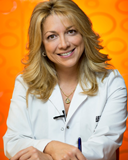
Biography:
Maria Vitale is currently working as a Medical Director for IFC Group [Industrial Farmaceutica Cantabria], at Madrid, Spain. She is an active speaker and has delivered presentations in different conferences. Her principle expertized topics are Acne, Herpes, Photoprotection, Photoaging, and Phototherapy. She is member of various scientific societies- American Academy of Dermatology (AAD), Dermatology Society of Argentina (SAD), and many more.
Abstract:
Colostrum is the first secretion product of mammary gland after birth and represents a natural source of vitamins, immunoglobulin, cytokines, hormones, and growth factors. All these factors stimulate tissues turnover, regulate energetic metabolism and strengthen the immune system. For these beneficial features, colostrum has been traditionally used to treat several diseases, such as rheumatoid arthritis and bacterial infections. Bovine colostrum promotes growth and migration of both epithelial and mesenchymal cells. Moreover, the mitogenic capacity of bovine colostrum on human keratinocytes has been demonstrated. The combination of growth factors and active molecules contained in colostrum makes it an efficient natural product able to improve wound healing. Furthermore, recent experimental data show the association of new hair follicles to the spontaneous wound healing process. Bovine colostrum composition has been only partially defined. However, some elements are known to be contained also in platelet rich plasma (PRP), which represent one of the most recent and effective tool to counteract androgenetic alopecia.Based on the above hypothesis described, the new cosmetic ingredient RTF-1 (bovine colostrum) may favor the renewal of hair follicles on glabrous skin areas and may represent a useful natural presidium against androgenetic alopecia. Will be discussed the results of in vitro and clinical studies of this new active ingredient.
Robert Kesmarszky
Groupe Courlancy, France
Title: Dermatological aspects of a humanitarian mission, a first time examined population
Time : 16:30-16:50

Biography:
He is currently working as a leading head and neck surgeon of the prestigious Groupe COURLANCY in France besides effecting neuromechanical research at the University of Technology and Economics in Budapest, Hungary. He is passionate about reconstructive surgery and cosmetological aspects. He is an author of several presentations and reviewer of several topic.
Abstract:
The authors participated a humanitarian mission in Africa during late 2013. One of the main goals was detecting pathological differences in the area, emphasised by the importance of reemerging pathologies, migration, lifestyle and climatic changes induced problems. Environmental, social, civilisational factors were all different compared to Europe. 679 patients were examined by the first author, representing a cross section of the society. None of them had specialized examination before. 18,2% of the patients presented dermatologic symptomes. The incidence of mycotic, parasital, cicatrisational and HIV related pathologies was higher then in Europe. The authors present the incidence, ethiology and treatement possibilities of the detected dermatological cases. Conclusion: In developing countries, dermatological disorders present different ethiologies, incidences. The cosmetological impact is important, skin quality is modified.
Inga Zemite
Veselibas Centrs 4, Latvia
Title: Fungal diseases of the scalp skin in the trichologist practice
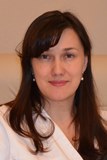
Biography:
Inga Zemite is a medical doctor specializing in the treatment of scalp skin and hair diseases. She is a leading and well-known specialist in her field in Latvia. Since starting her practice in 1997, she has become a leading expert in her country. She is also a general practitioner and often appears on national TV, radio, and in different publications to give advice about hair treatments, healthy living and explaining the course of diseases. She is the founder and a leading member of the Latvian Hair Doctors Association and is the mehttp://cosmetology-trichology.conferenceseries.com/mber of EHRS.
Abstract:
Tinea capitis is a common infection occurring predominantly in prepubertal children. Although infection in adults can occur, it is considered as a rare condition. There are different kind of infections that can affect scalp and hair. Microsporum and Trichophyton species are the aetiologicala gents of tinea capitis. The most common causative fungi are T. tonsurans and M. canis. Tinea capitis is diagnosed by its appearance and the results of an examination of a sample of plucked hairs or of hairs and scale from the scalp. Though chronic forms of dermatophytias often stay overlooked; and also malassezia influence is underestimated as it is usually seen as saprophyte. If left untreated, tinea capitis may cause permanent hair loss and scarring. In our clinical investigation we found out a lot of cases of infection and treated patients with antimicotical therapy to clean infection. The findings after treatment was improvement in hair quality and volume, disappearance of itchy conditions, decrease in symptoms of seborrhea and general improvement in feelings of patient. Obvious improvement in hair quality and volume was seen in young adults less than 30 years old with early symptoms of androgenetic alopecia.
Conclusion:
Influence of malassezia yeasts is underestimated and most probably it has quite high involvement in cause of hair loss. It is needed to do further investigation to prove this statement in trichological practice.
Praggajit Bhikkhu Anip
International Buddhist College, Thailand
Title: The nations and reality of cosmetic gynecology
Biography:
Praggajit Bhikkhu Anip has successfully completed Bachelor Degree with 1st class honor studied on Buddhism in English at the age of 29 years from Mahachularajalongkorn University and postdoctoral studying in International Buddhist College on Buddhist studies. He has number 4th stage monk in monk temple in Thailand. He has written many reputed articles across the world in many conferences such as Canada, Australia, Europe, South Korea, and Japan on Buddhist perspective which reputedly published in their editorial journals.
Abstract:
World have been sophisticated with the innovation of it. It has been done by human. Human natures are so developed and incomparable. Their intellectuality world become the lightest in every aspect, for being advanced in the world; it itself cannot perform because the world have only four elements which refer to earth, water, wind and fire. All of those four things inception and orthodox are erecting up from these four elements with the intention of the being. Among the so many things cosmetic is most one has been used. There are numerous types of cosmetic which are used by people in this world. Cosmetic comes from several sources. The source can be from natural, oil, seeds, etc. Cosmetic can make a person aesthetic and happy, good appearance and nice but similarly it can destroy one’s life. Cosmetic can cause breast cancer, ulcer, etc. most of the patient, we can see in several hospitals or clinic; are suffering from various diseases due to cosmetics. The conservative treatment for the breast cancer and external ulcer for what they need for surgical treatment by the doctors. It is required to do with proper manner. Most of the people they need to have a clinical operation to cure from these diseases, but very rarely they get cured from this disease. The authors classify these squeal into three types: 1. Unsymmetricalism, 2. Partiality of open conversation and 3. The major deformity is reluctant of discussion about part of the injured body which is required for proper treatment. Very less patient discusses about the part of the body rest of them hide from doctors. Most of the patient needs underwent surgery from irradiation. Most of the people have satisfied with the cosmetic result. Some patients are treated by various technical terms such as implants, mammaplasty, and abdominal flap. Only few patients are satisfied about the using cosmetic influences. Most of the people even don’t know how to use the cosmetics in their way of using. It is because of lack of knowledge about applying cosmetics. Although they do not get the immediate result of it, but later on they get it back. This classification is a valuable guide for technique selection. Cosmetics should be avoided to be out of getting attracted by cancer, ulcer etc, because they are mainly postoperative, optimal treatment should be prevented by performing immediate remodeling of the treated part before radiotherapy. This pleads for integration of plastic surgical techniques at the time of the original lumpectomy, thus reducing the need for delayed reconstructive surgery.
